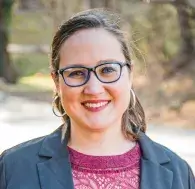The Values of Arts Education
Arts education plays a vital role in the personal and professional development of citizens and, more broadly, the economic growth and social sustainability of communities. Its loss or diminution from the system would be incalculable. And yet, despite widespread support from parents and the general public, arts education still struggles to be prioritized by decision-makers. We believe one reason the arts are not prioritized stems from a disconnect between the perceived value of the arts and the real benefits experienced by students. We often heard in our outreach that the arts are misunderstood; one listening-session participant, a leader in arts education advocacy, noted that “decision-makers may have a flawed vision of what arts learning is in their heads, and they make decisions based on that vision.”
To remedy this, in this section we document the important attributes, values, and skills that come from arts education. We argue that arts education:
- Builds well-rounded individuals;
- Broadens our understanding and appreciation of other cultures and histories;
- Supports social and emotional development;
- Builds empathy, reduces intolerance, and generates acceptance of others;
- Improves school engagement and culture;
- Develops valuable life and career skills; and
- Strengthens community and civic engagement.
Many of these social and emotional benefits are intertwined with the priorities facing our school systems as we recover from the pandemic. These themes are enriched by a broad collection of voices—students, parents, arts educators, artists, and others—who told us about their experiences with arts education and how they have benefited.
“Though I personally have enjoyed and benefited tremendously from arts education, it is in my role as parent that I see most poignantly the power of arts education. I have seen my children think, feel, and connect through the arts in ways exponentially more powerful than they could without. When we moved to a community which did not support art education . . . I not only saw my own children struggle socially, emotionally, and academically; but also saw the devastating effects on the youth community. I am delighted now, in a new community, to see my children perform in musical and theatrical productions as well as to develop habits of inquiry, resourcefulness, and persistence through visual art. These experiences overshadow the toll that lack of arts opportunities took. Yet I grieve for those who do not have such access.”
—Erin, Parent, Camdenton, Missouri
Arts Education Builds Well-Rounded Individuals
Similar to math, science, or history, the arts are a way of knowing and understanding the world and the complexity of human experience. Arts education builds an appreciation for the arts, and provides students with an introduction to artistic disciplines, techniques, and major movements that serves as a foundation for lifelong engagement. As such, the arts should not be viewed as a frill or subservient to other disciplines. Knowledge of the Renaissance, the Harlem Renaissance, pottery crafting techniques, or the fundamentals of perspective and design holds no less value than knowing the chemical formula for photosynthesis or how to calculate the circumference of a circle. And for many, it will mean much more. Indeed, research from the National Endowment for the Arts (NEA) found that childhood arts exposure is the number one predictor of arts participation as an adult.37 Without that exposure, this window to the world remains hidden.

“I married a humanities professor, poet, and semiprofessional musician who had been saved by music as a child and had the opportunity to grow up playing in the Cleveland Symphony Orchestra. This of course meant that our house has been filled with music and musicians forever. . . . When it came time for our children to play instruments, my husband steered them toward instruments that would complete his future jazz trio. He was still on the trumpet, my son emerged as the piano player, and my daughter was on the upright bass. When they were small, they would pretend or struggle through, but last year before my husband Greg died unexpectedly, there they were playing “All Blues” by Miles Davis in the trio he envisioned. When they are feeling down or need to remember him, they go back to their instruments without prompting and just play. . . . [Art] becomes a means to connect and remember.”
— Dr. Maria Trent, Physician-Scientist, Maryland
Arts Education Broadens Our Understanding of and Appreciation for Other Cultures and Histories
Alongside the deeper insights into the world that can come from the arts, they also provide a vital link to the past. Art spans time and space and opens a window into experiences distant from us. From the cave paintings of Lascaux to Hokusai’s The Great Wave to Lin Manuel Miranda’s Hamilton, the arts document the richness of human history, preserved for future generations to contemplate and build upon. Arts education uniquely gives students the opportunity to engage with the past in a way that brings history to life and goes beyond textbooks. Expanding the curriculum beyond the Western-centric canon furthers these opportunities for deeper understanding and appreciation across cultures. Research shows that arts education not only increases historical knowledge but also historical empathy, opening up a deep understanding of what it was like to live in different times and places.38

Art can also offer a way to preserve the cultural heritage of marginalized communities by engaging communities whose histories and culture have been suppressed or forgotten. Jamaica Osorio, an artist and scholar, told us that in her Hawaiian immersion school, arts were deeply integrated:
“So, when we studied literature, we studied these ancient mo‘olelo—these stories, histories, and literatures, and these songs of our kūpuna—of our ancestors—and that was the primary document. . . . I’ve devoted my life to the study of Hawaiian literature and, in particular, literature in Hawaiian, and have devoted my work to trying to represent these texts through poetry in a way that will be relevant and resonant with the people of my generation, who may feel—for whatever reason—distanced or disconnected from that archive.”
At every stage and in every school, the connections the arts open to the past can help deepen a child’s understanding of the world.
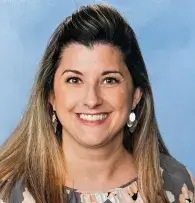
“The art classroom is a perfect place to introduce students to a world beyond their own. Through art-historical experiences, students can connect past and present events, realize that history is explored and experienced through art, and appreciate the struggles and triumphs of times they have not lived through.”
—Jessica, Visual Arts Educator, Altoona, PA
Arts Education Builds Empathy, Reduces Intolerance, and Generates Acceptance of Others
The arts have long had a role in bending the arc of history toward justice. Just as the arts help us better understand ourselves, they also improve our ability to empathize with others. As Mary Anne Carter, the twelfth chair of the NEA recently noted, “The arts are a powerful antidote against bigotry and hate. The arts can build bridges, promote tolerance, and heal social divisions.”40 We have all witnessed the power of the arts to promote understanding, from the ability of plays like Angels in America to challenge how audiences saw AIDS, to the unifying role that music played in the Civil Rights Movement.
Arts education exposes students to a greater diversity of opinions and ideas. This in turn can challenge preconceived notions of others and build greater empathy and acceptance. A growing body of research confirms the power of arts education to contribute to these prosocial behaviors.41 For instance, research in California public schools revealed that drama activities prompted students to take on different perspectives through interpreting a character’s motivation.42 Loie, an eighth-grade student from Winston-Salem, North Carolina, told us that through her experiences with arts courses, “I’m able to express my opinions and be open to other people’s opinions. . . . I can look at their experience and learn from it. . . . There’s different ways of looking at things.”
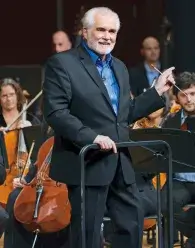
“Effectively communicating that we understand what another person is feeling is one of the greatest gifts we can give to another human being . . . from listening to even just a single movement of music by a classical composer . . . abstract, wordless music can transcend time and ethnicity in its ability to communicate the full depth of human emotion.”
— George, Teaching Artist (Music), Bedminster, NJ
Arts Education Improves School Engagement and Culture
In a perfect world, students would enthusiastically look forward to coming to school. Educators are continually searching for ways to excite students about learning, combat chronic absenteeism, and curb the dropout rate. Engaging students in their own learning process is not only important for the time they spend in school but is essential to inculcating a lifelong love of learning and discovery.
Arts education is particularly well-suited to combat complacent attitudes toward learning. Indeed, research finds that students enrolled in arts courses have improved attendance, and the effects are larger for students with a history of chronic absenteeism.43 Related research finds that arts learning generates spaces “full of student passion and apprenticeship style learning.”44 The arts provide students a sense of ownership and agency over their own education. Students who enroll in a theater class, for example, gain a sense of purpose as they work toward opening night, and they build a community with their peers and teachers as they work together toward a common goal. Alex, an arts educator from Chicago, illustrated it this way:
“I believe that it is imperative for students to have voice and choice in their learning . . . students are more invested and take more risks when they create from the point of what is personal or important to them. . . . When students discover an idea or medium that speaks to them, they become more invested in learning and creating.”
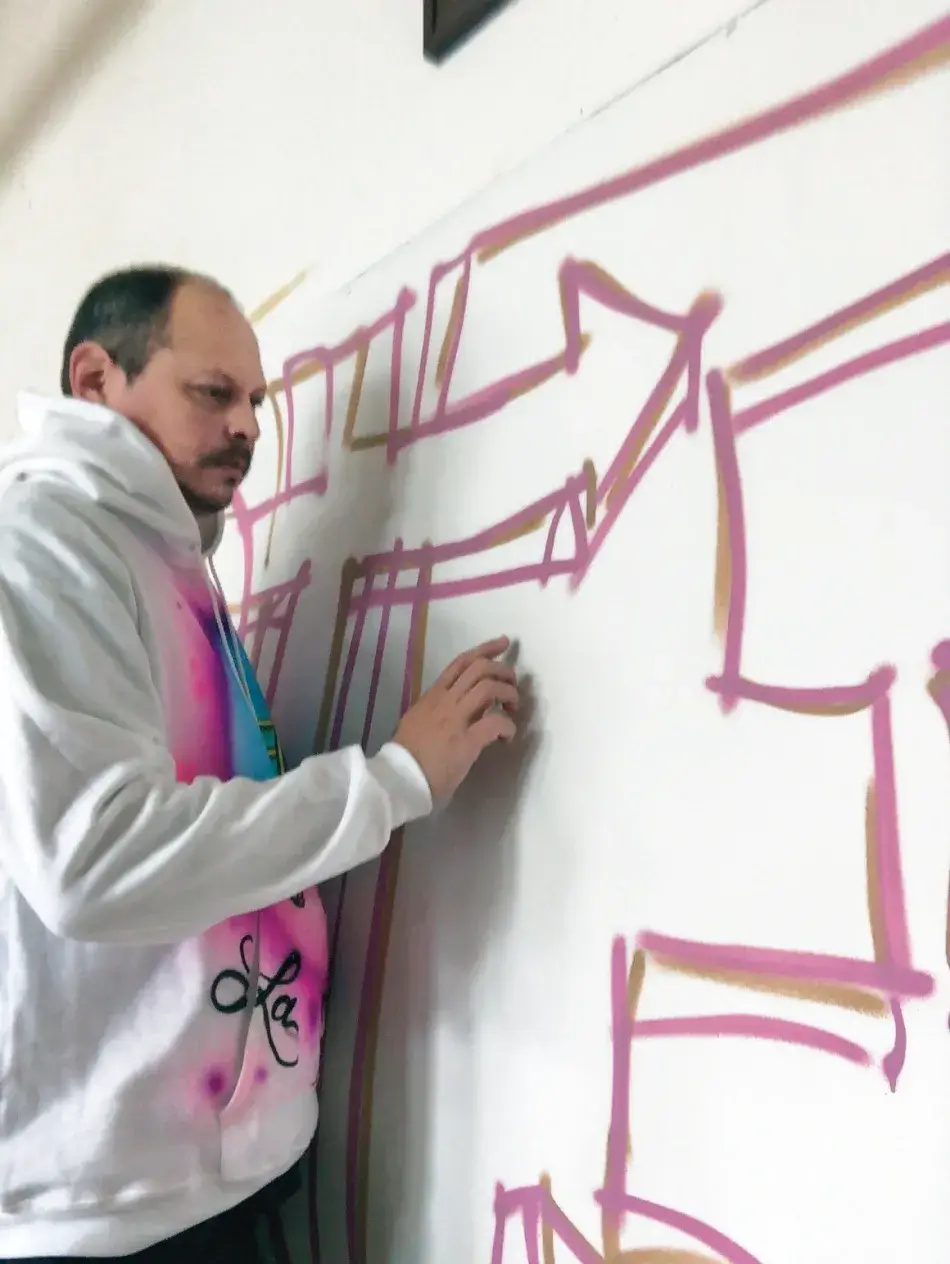
Arts education also improves school engagement by providing different ways of accessing educational content. In a nation with over 50 million K–12 students, schools need a broad set of entry points for students to discover what kinds of learning environments work best for them. Jessica, a visual arts educator from Altoona, Pennsylvania, told us, “Students who may be low achievers in the academic classroom are some of my highest functioning students in the art room. . . . Everyone has strengths and everyone has weaknesses.” Not all students learn the same way, and art offers students with different learning styles another mechanism by which to absorb content and ideas. Jensen, an eleventh-grader from Washington state, told us, “from taking art classes I learned that having a different pace or approach to things is okay, and everyone learns and makes things in their own way. And that really helped with my self-esteem in school and outside of school.”
“I really disliked school and thought it was an incredible waste of time and looked forward to turning sixteen so that I could drop out like my Dad had done. The one thing that kept me in school was that I really loved band. I couldn’t see myself leaving the band behind, and so I stayed in school and even went to college. Not as a music major, but I continued to play in the College Marching and Concert bands. Now I work in Arts Education and hope that the artists we send to perform in schools and teach workshops are finding the students who are bored and dislike school and are giving them a reason to stay.”
—Donnajean, Arts Educator, Kendall Park, NJ
Finally, the collaborative nature of the arts can build strong bonds among students, teachers, and parents, thus contributing to a more positive school culture. Teachers in schools with higher levels of arts education report greater parental involvement.45 Erin, the parent from Missouri, relayed this compelling story about her children:
“This year [2020] was, as was the case for most of us around the world, a particularly tough year. My children were uncharacteristically seized with anxiety and dread about returning to school. One child in particular, typically a bright and eager student, despaired the return. It was not her friends but her art teachers—and the experiences they collaboratively created—that completely turned her attitude around. For that, I am forever grateful; for in the midst of dread and despair, art helps us to meet and support one another.”
“I grew up in a dysfunctional family . . . and I wrote about all the loss and damage of growing up in a dysfunctional family—the abuse and the neglect. And when I was a senior in high school, the very last thing that happened before I graduated was someone turned in one of my poems, and it won the poetry contest for the [school’s literary magazine]. It was profound. I wasn’t this zero nothing, and my work had merit. And it planted a seed that really navigated the rest of my life. . . . That little measure of recognition really formed everything, and I’m so grateful for everybody that made that literary magazine exist in this enormous high school. There were lots of sports and lots of clubs and that tiny literary magazine was, I assume for other writers like me, a life raft—a lifesaving raft.”
—Mary Agnes Antonopoulos, Copywriter, Monroe, NY
Arts Education Develops Valuable Life and Career Skills
Arts education also imparts valuable skills that will serve students in their lives and careers: observation, problem-solving, innovation, and critical thinking.46 Participating in the arts can also improve communication skills, generate self-esteem, teach collaboration, and increase confidence. Such skills are valuable to artists and non-artists alike. For those interested in careers in the arts, from musicians to music producers, fine artists to graphic designers, arts courses provide an opportunity for career exploration and a foundation for career choices.
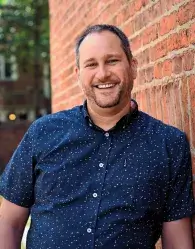
“Arts education played an important role in developing my skills and preparing me for that dreadful thing we call ‘adulthood.’ This may be cliche, but it’s true when I say it’s taught me important life skills such as thinking outside the box, being able to adapt quickly to situations, developing that camaraderie with people, and being comfortable in my own skin. Improv is definitely something I benefited from in my arts education. The number one rule of improv is to never say no but always say, ‘Yes, and. . . .’ That’s proven to be key to my success in life—personally and professionally. My arts education taught me how to be confident . . . flexible, creative, how to be a team player, and when to listen and talk. I can’t say for certain if I’d be as successful in my personal or professional development without my arts education, and I certainly appreciate what it’s done for me and don’t take it for granted.”
—Aaron Kubey, Director of Artistic Sign Language, Washington, D.C.
Moreover, specific skills covered through arts education directly affect a broad swath of careers outside the core arts careers. Stephanie, an arts educator in suburban California, told us that her main goal in teaching art is “developing creativity and innovation.” From the interior designer relying on color theory to the architect who uses 3D software to the engineer who incorporates elements of design, the skills embodied in arts education have wide applications. Jensen, an eleventh-grader who had studied at a specialized arts school and wants to pursue a career in medicine, told us, “a lot of the things I learned are skills I would use interacting with people and the world around me, and not just a sheet of paper or something that’s on my computer.” The far-reaching benefits of arts education include work ethic and resilience. As Jade Elyssa A. Rivera, who works in arts education policy and advocacy in California, shared, “The arts were an essential part of my upbringing. It is where I learned the meaning of hard work. It is where I learned that, even in the face of systemic injustices, my dreams are achievable. It is where I learned that, if I just roll up my sleeves and do the work, anything is possible.”
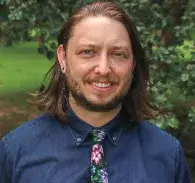
“While I continued to love art and teaching, in 2015 I made a drastic career shift and left the field of education. I found myself working in the private sector for a large retailer doing ISD [instructional systems design] work . . . thinking this would be a new path. While it did end up being a new path, it wasn’t as far from my background as I thought it would be. It was only a few months into this work that I found myself applying for and being accepted for a role based on the fine arts and education background I had been pursuing previously. While it was applied in a corporate sense, I was given the opportunity to photograph, film, and design training for retail employees directly applying principles I had learned throughout my arts education and career for an entirely new and unique audience. Beyond aesthetics and design, I’ve been able to apply the critical thinking skills, view problems from multiple sides, draft ideas, and quickly revise or shift. Many of these were formed through learning about art. . . . Without art and its impact on my life, I would not have the perspective, experiences, or career I do today.”
—Ian, Former Arts Educator, Arkansas
Arts Education Strengthens Community and Civic Engagement
Finally, arts education can lead to socially empowered and civically engaged youths and adults. Equipped with the knowledge, habits, values, and skills provided through arts education, students are well-prepared to promote democratic values and contribute to the health of our economy and culture.47 Arts education experiences offer community and civic contributions with the potential for positive transformations. For example, Grace, an arts educator in Lake Arrowhead, California, described how, “Over the course of my 27 years of teaching art I have promoted community and civic engagement with schoolwide murals on and off campus.”
Strengthening and valuing communities through the arts also occurs through collaborations between schools and communities. Leslie Imse, a music educator and chair of the Farmington Public Schools K-12 music department, living in Simsbury, Connecticut, shared an example of her school’s engagement with seniors in their community:48
“In addition to performing at our school concerts, student musicians perform regularly in their school and town community. After the 2008 recession, the music department realized that the population that was hurting the most were the senior citizens in our community. We created a new event for the senior citizens, bringing them to our school cafeteria for a free meal and ‘a show.’ It was so popular in town that we annually have one ‘Senior Citizen Cafe’ in the fall and one in the spring. The relationships that students have made with the senior citizens are meaningful, as our musicians not only prepare music for the older generation but also wait tables and converse with the seniors. . . . This is one of the many service activities that the music department connects with the community.”

Arts education also provides opportunities for students to engage with current events both close to the lives of students and far away. For instance, at Clarence Edwards Middle School in Boston, the eighth-grade visual arts class run by Shari Malgieri follows the news—international, national, and popular—over the entire year and then collaborates on a comprehensive mural about the year as seen by the students.49
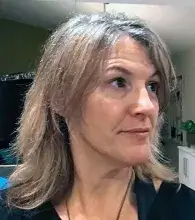
“As a person who facilitates arts-in-education residencies, I’ve watched people of all ages benefit from the arts. . . . I’ve seen teenagers weld beautiful fish from trash they cleaned from a stream to educate the public about the ways pollution threatens wildlife, and heard them say how meaningful it is to know that their work will make a difference. I’ve watched the joy on the faces of folks with intellectual disabilities as they crafted panels for a group quilt that would go on a city-wide tour. . . . Nearly every day of my working life is an encounter with the ways arts in education pulls people together, ignites change (both personal and social), and gives life to deep and lasting happiness.”
—Marci, Arts Facilitator, Lancaster, PA
These aspects of community and civic engagement, in concert with the other benefits of arts education, prepare students to become effective citizens who are socially empowered and civilly engaged adults, equipped with the tools to contribute their own voices to the ever-evolving story of America. As Amanda Gorman, the nation’s first youth poet laureate, expressed, “All art is political. The decision to create, the artistic choice to have a voice, the choice to be heard, is the most political act of all.”50 How we respond to the deficit in arts education in America—how we prepare our future leaders to refine and use their own voices—will help define our course for generations to come.
